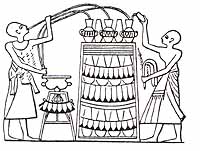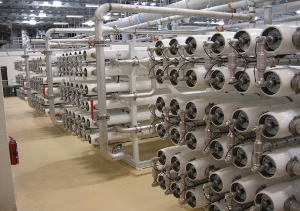
- Allergies and Air Pollution's Effect on Health
- Asthma & How it is affected by Air Pollution
- Air Pollution & Cancer
- Air Pollution's Harmful Effects on the Elderly
- More about HEPA and Carbon activated Filters
- Different types of air filters
- Mold Spores and Indoor Air Quality
- UV Air Purifier Guide
- What causes bad indoor air quality?
- How do Air Purifiers Work?
- Air Pollution May Cause Respiratory Infections
- Air Pollution in the workplace
- Pet Dander's Effect on Air Quality and Asthma
- Air Pollution & Sleep Apnea
- Top 5 Reasons Why you should purify Air
- What you need to know about indoor air
- How Pets cause allergies
- Tips on Choosing the Right Air Purifier
- Multiple Chemical Sensitivity
- What are Dust Mites?
- The History of Air Purifiers
- Air Pollution Problems of the new home
- 5 Ways to Reduce Your Pollen Allergies
- Sinusitis Causes and treatments
- What is HEPA filtration?
- Air purifiers and Wood Smoke
- Home Air purifiers and Cigarette Smoke
- Volatile Organic Compounds (VOCs)
- Formaldehyde Air Pollution
- Is your air purifier ozone free?
The History of Clean Drinking Water
Clean drinking water is so widely available today that many people take it for granted. Actually, human beings have taken extensive measures throughout history to produce clean drinking water, and such efforts even date back to before they discovered how to make fire by rubbing two sticks together. In the ancient times, people determined the purity of water by taste, and this method has been found to be incorrect later on. Nonetheless, their continual efforts in obtaining clean drinking water have led to the development of many innovations that make water treatment more successful today.
In an American Water Works Association book called The Quest for Pure Water: The History of Water Purification from the Earliest Records to the Twentieth Century, authors M.N. Baker and Michael Taras speculate that the pursuit for pure drinking water began in the prehistoric times. Nevertheless, the earliest documentation of water treatment was found in Sanskrit writings and inscriptions in ancient Egyptian tombs. Many different water treatment methods are mentioned in the Sanskrit medical writings known as the Sus’ruta Samhita, which dates back to about 15th century B.C., and these methods include the boiling of water over fire, heating of water under the sun, dipping of heated iron into water, filtration through gravel and sand, as well as the use of the Strychnos potatorum seed and a stone called “Gomedaka”. On the walls of the tombs of Egyptian rulers Amenophis II and Rameses II, which date back to the 15th and 13th century B.C. respectively, there are pictures of a water clarifying apparatus.
 The purification of water is also mentioned in the Bible. Around the 12th century B.C., Moses and the Israelites found that the water in Marah was bitter. Following instructions from God, he cast a tree into the water, and the water was immediately sweetened. In another instance, the residents of Jericho complained to Elisha that the water in the city was “naught”, and the prophet purified the water by casting salt in it.
The purification of water is also mentioned in the Bible. Around the 12th century B.C., Moses and the Israelites found that the water in Marah was bitter. Following instructions from God, he cast a tree into the water, and the water was immediately sweetened. In another instance, the residents of Jericho complained to Elisha that the water in the city was “naught”, and the prophet purified the water by casting salt in it.
In the 9th century B.C., a Spartan lawgiver invented a drinking cup that could make mud stick to its side. Later on, the father of medicine, Hippocrates, developed a device called the “Hippocrates Sleeve”, a cloth bag that was used to strain boiled rain water, eliminating hoarseness and bad smell. Both the Greeks and Romans had very elaborate water purifying systems. Their water treatment professionals used many different methods to produce clean drinking water, and these included the method of placing macerated laurels in rainwater by Diophanes and the immersion of a bag of pounded barley and bruised coral by Paxamus. In the 8th century A.D., an Arabian chemist called Gerber suggested the use of wick siphons as a way to purify water.
In 1671, Sir Francis Bacon revealed his ideas about desalination in his writings A Natural History of Ten Centuries. He had come across an experimenter who had succeeded in purifying seawater by passing it downward through 20 vessels, and he assumed that if he dug a hole close to seashore, he would get pure water after the seawater had passed through the sand. Also in the 17th century, an Italian physician by the name of Lucas Antonius Portius provided details of a multiple sand filtration method in his writings entitled Soldier’s Vade Mecum. This method employed the use of three pairs of sand filters, each of which had an upward-flow filter and a downward-flow filter. Water would enter the settling compartment of the system after it had been strained through a perforated plate.
Between the 17th and 18th centuries, filtration became the preferred water purification method for many communities, and more and more town officials were considering the possibility of providing clean drinking to all their residents. In 1703, French scientist La Hire proposed to the French Academy of Sciences that every household in Paris should have a rainwater cistern and a sand filter. His system included a covered and elevated cistern, which could prevent the growth of moss and freezing.
|
About one century after La Hire’s proposal was made, the town of Paisley in Scotland introduced the first municipal water purifying plant in the world. Established in 1804, this plant used gravel filters and concentric sand to treat water, and the water is distributed with the use of a horse and cart. In 1827, Robert Thom invented slow sand filters, which were installed in Greenock, Scotland, and two years later, James Simpson came up with a similar system that became widely used around the world. Nonetheless, slow sand filtration used up a lot of land, and it could not keep up with rapid population growths. In the 1880s, the rapid sand filtration method was introduced in the United States. This system included two of the main features of Thom’s system, namely, the reverse flow wash and the false bottom, but it used mechanical agitators for loosening debris and water jets or backwashes for cleaning filter media. Rapid sand filtration involved pretreatments, such as coagulation and settling for reducing sediment load on the filter, and charcoal filtration for improving taste and odor.
It was also in the 19th century that it became clear that water quality has a significant impact on health. In the middle of the century, town officials in London noticed that cholera deaths had decreased after water treatment systems were installed. Realizing the importance of providing clean drinking water for its residents, London passed the Metropolitan Water Act of 1852 to ensure that all water supplied to the city would be filtrated. After the Industrial Revolution in the 19th century, water around the world became more and more polluted, and new and more sophisticated water treatment systems were being developed to ensure that everybody would have safe and clean water to drink.
Here are links to more information about the history of clean drinking water:


